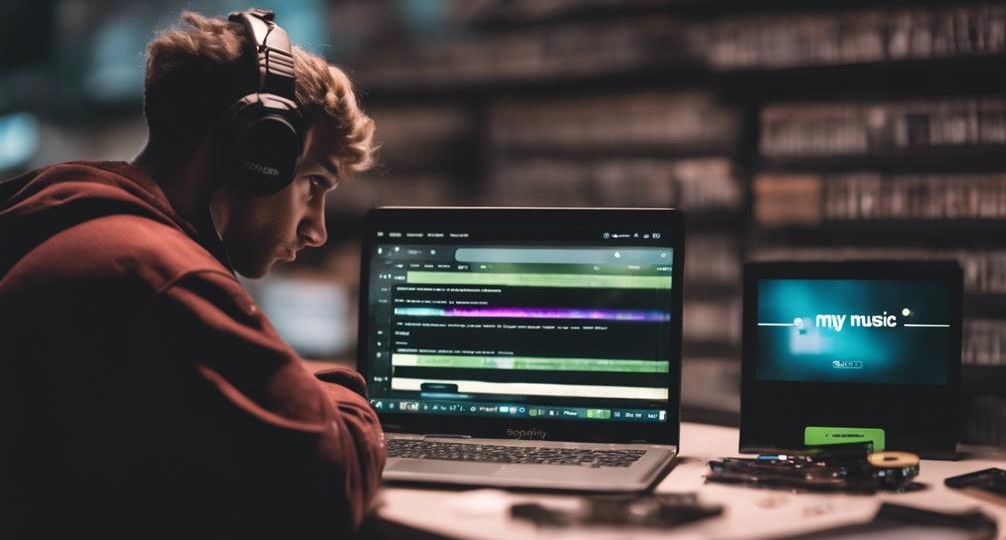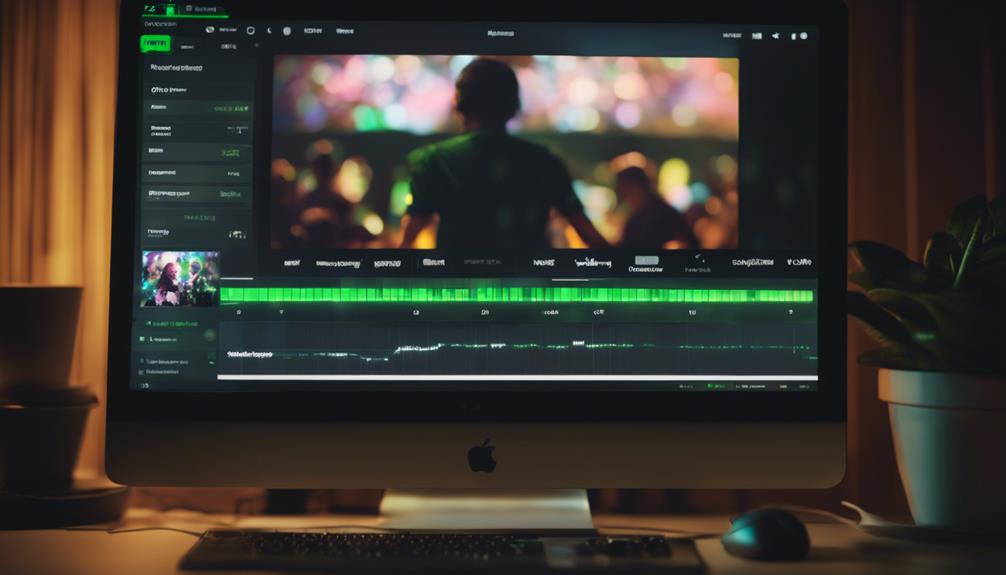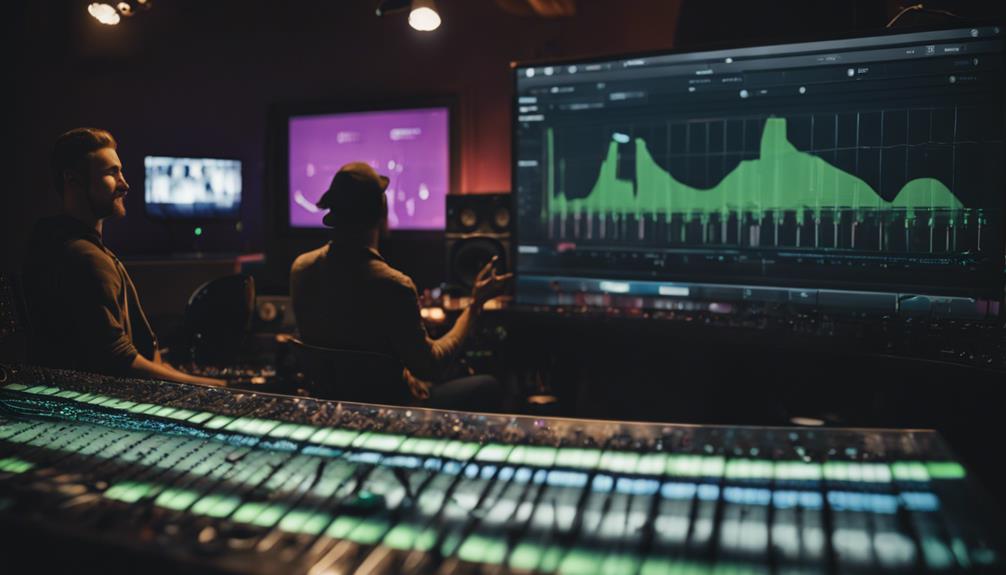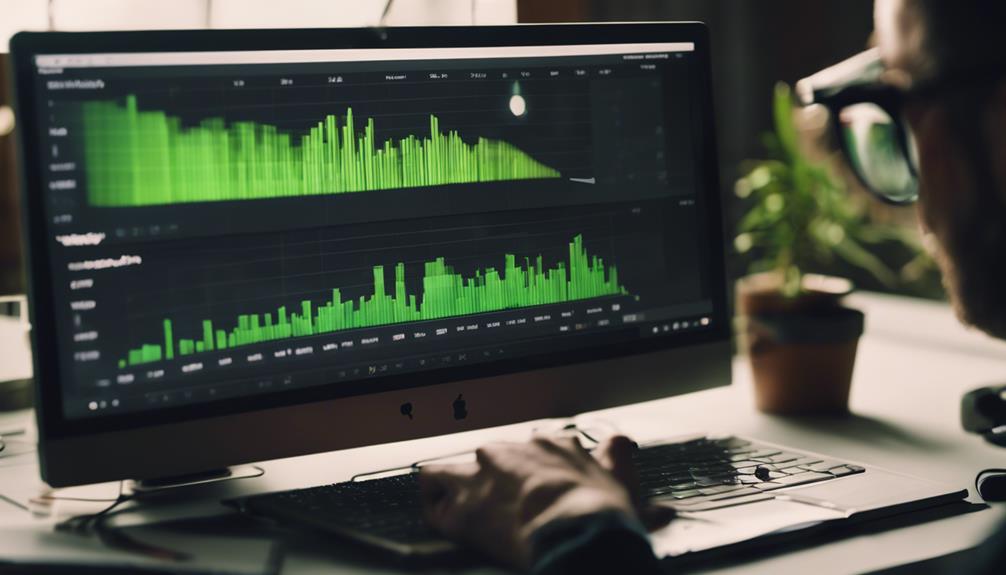
Is it hard to get 10,000 streams on Spotify?
Yes, it can be tough to achieve 10,000 streams on Spotify. This challenge is rooted in factors like Spotify’s intricate algorithm, the supremacy of popular tracks, and intense industry competition. Yet, success is possible. By mastering high-quality music, leveraging Spotify playlists, engaging on social media, building a solid fanbase, and adopting effective music marketing strategies, you can overcome these hurdles. Regular releases and collaborations can increase visibility, and tracking your progress can guide strategy refinement. Unearthing precise tactics, each tailored to your music, is your key to attaining those 10,000 streams, and we’re just scratching the surface of possibilities.
Key Takeaways
- Achieving 10,000 Spotify streams can be challenging without a strategic approach involving high-quality music, effective marketing, and audience understanding.
- Utilizing Spotify playlists and maintaining consistent releases can boost visibility and increase chances of achieving 10,000 streams.
- Building a solid fanbase through engagement and branding, coupled with regular content, can help reach the 10,000 streams milestone.
- Collaborations with other artists can introduce your music to new audiences, increasing streams and potentially reaching the 10,000 mark.
- Assessing progress and results regularly, and adapting strategies based on these insights, can make the goal of 10,000 Spotify streams more achievable.
Understanding Spotify’s Algorithm

While it might seem complicated at first, grasping Spotify’s algorithm is essential if you’re aiming to get your tracks streamed 10,000 times or more. This algorithm understanding is the key to tapping into the power of playlist placements, which can be a game-changer for your music’s reach.
Spotify’s algorithm, in essence, is a set of complex calculations that determine which songs get recommended to listeners. It tracks data like a song’s popularity, your listening habits, and even the time of day to tailor its suggestions. The algorithm also considers the frequency of track saves and skips, a song’s ‘skip rate’ being a significant factor in its success or failure.
Getting onto popular playlists can boost your streams exponentially. The algorithm favors tracks that are already popular, creating a snowball effect. If you’ve got a track that’s gaining traction, it can get picked up by Spotify’s automated playlists, further increasing its visibility.
It’s a complex system, but understanding it can give you a competitive edge.
Importance of High-Quality Music
As you work towards achieving 10,000 streams on Spotify, it’s important to understand the significance of high-quality music.
With a focus on producing excellent tracks, you’ll want to juggle the balance between quality and quantity, ensuring that your output doesn’t compromise on sound quality.
Producing High-Quality Tracks
Why is creating high-quality tracks important, you may ask? It’s because listeners are more likely to share, save, and replay your music, all of which increase your chances of hitting the 10,000 streams mark on Spotify. But how do you guarantee quality? Two crucial components come into play here: track mastering and album artwork.
Track mastering can make or break your music. It’s the final step in the music production process, where all the elements of your track are brought together, balanced, and enhanced to ensure a cohesive and polished sound. A well-mastered track doesn’t just sound good; it stands out, even amidst the ocean of music on Spotify. This is where a professional mastering engineer can be a game-changer. They’ve the expertise to bring out the best in your music, ensuring it’s sonically pleasing and compatible across all playback devices.
The importance of album artwork often gets overlooked in the digital age, but it’s more significant than ever. It’s your music’s visual representation, the first impression. An engaging cover can pique a listener’s curiosity, leading them to your soundscape. So, invest in professional design services to create compelling album artwork that mirrors the quality of your music.
Quality Versus Quantity
In the pursuit of hitting your Spotify streaming goals, remember that the quality of your music trumps quantity every time. It’s not simply about churning out track after track; it’s about crafting a sound that resonates with your audience.
This means not only producing beautiful melodies and compelling lyrics but also paying attention to elements like album artwork and genre exploration.
Album artwork, often overlooked, is a powerful tool that can lure listeners into giving your music a chance. It provides a visual representation of your brand and can set the mood for the listening experience. Make it innovative, expressive, and most importantly, reflective of your music.
Genre exploration, on the other hand, can help you stand out in an oversaturated market. Don’t be afraid to blend genres or to create a unique sound that transcends traditional boundaries. It’s about being memorable and offering something fresh to your listeners.
Put simply, you’ve got to have substance. Your music needs depth, originality, and artistic integrity. Quality music not only attracts streams but also cultivates loyal fans who’ll stick around for the long haul.
Impact of Sound Quality
You might be surprised to learn just how much the quality of your sound impacts your Spotify streams. Sound engineering and audio mastering play pivotal roles in creating an immersive, high-quality listening experience. It’s not just about making music; it’s about crafting sonic artistry that compels listeners to hit ‘repeat’.
Sound engineering is the foundation of audio quality. It involves technical aspects like recording, editing, and mixing tracks to bring out the best elements of your music. Poor sound engineering can result in a track that’s muddled or unbalanced, turning off potential listeners.
Audio mastering, on the other hand, is the final touch in the music production process. It’s a meticulous process that polishes your tracks, ensuring consistency and balance across all songs on an album. An unmastered track can sound flat and lifeless, lacking the depth that listeners crave.
High-quality sound isn’t a luxury—it’s a necessity. It’s the difference between a track that’s easily forgotten and one that resonates, capturing listeners’ attention and increasing your streams.
Utilizing Spotify Playlists

Leveraging Spotify playlists can dramatically boost your music’s visibility and streaming numbers, given their popularity and the vast listener base they cater to. Playlist curation is a powerful tool in your arsenal, allowing you to craft a musical journey that resonates with your target demographic.
To wield this tool effectively, you need to understand your audience. Audience targeting isn’t just about age or location; it’s about understanding their musical tastes, their listening habits, and the emotional connection they seek with the music they consume.
Be innovative and strategic in your approach. Consider the mood, the energy level, and the lyrical themes of your tracks when creating a playlist. Position your music alongside other similar tracks to attract the right listeners.
The Role of Social Media
Don’t underestimate the power of social media in increasing your Spotify streams.
By leveraging platforms like Instagram, you can engage your audience in a more personal way and promote your music more effectively.
Understand that each post, story, or live session is a chance to connect, create interest, and ultimately, drive your followers to hit play on Spotify.
Leveraging Social Media Platforms
In the digital age, strategically utilizing social media platforms can dramatically increase your Spotify streams, acting as a potent tool for promoting your music. The right approach can amplify your reach, bring your music to the attention of new listeners, and help you build a dedicated fan base.
Firstly, influencer partnerships represent a significant opportunity for exposure. Teaming up with influencers whose followers match your target demographic can get your music heard by those most likely to enjoy it.
Secondly, paid promotions can also be incredibly effective. Running targeted ads on platforms where your potential fans spend their time can lead to substantial increases in streams.
Lastly, don’t overlook the power of your own social media presence. Regularly sharing engaging, interesting content can keep your existing fans engaged and attract new ones.
Engaging Audience on Instagram
Frequently, Instagram proves to be a pivotal platform for engaging your audience and boosting your Spotify streams. The platform’s visual-driven interface invites listeners into your creative world, building a personal connection that enhances their streaming experience.
Instagram live performances, for instance, can be game-changers. They offer exclusive, real-time interactions that can’t be replicated on any other platform. Your followers get to experience your music first-hand and engage directly with you. These intimate sessions often result in increased Spotify streams as audience members discover a deeper appreciation for your music.
Influencer partnerships also offer unique opportunities on Instagram. Collaborating with influencers whose audience aligns with your music style can dramatically expand your reach. They can introduce your music to their followers, driving more streams on Spotify. However, be strategic. It’s not just about numbers, but about reaching the right audience who’ll genuinely love your music.
Building a Solid Fanbase

Cultivating a reliable and engaged fanbase is the cornerstone of achieving your target Spotify streams. This process revolves around two critical aspects: Fan Engagement and Artist Branding.
- Fan Engagement:
This is more than just responding to comments on your social media posts. It’s about creating an authentic connection with your listeners. Hold regular live streams, Q&As, or even virtual concerts. Make your fans feel like they’re part of your journey.
- Artist Branding:
This involves creating a consistent, recognizable identity. Your branding should reflect who you’re as an artist and what your music stands for. It’s essential to maintain this brand across all platforms, not just Spotify.
- Consistent Quality Content:
Your fans are here for your music, so it’s important to keep delivering high quality content. Regular releases can keep your fanbase engaged and excited.
Effective Music Marketing Strategies
To skyrocket your Spotify streams, you’ll need to master the art of music marketing, a strategy that can amplify your reach and put your music in front of potential new fans. This is where music branding becomes essential. It’s not just about creating music, but creating a brand that resonates with your target demographics.
Music branding is about consistency, uniqueness, and connection. Your music, visuals, and storytelling should align to create an identifiable brand. Conveying a consistent message across all platforms can help you connect with your target demographics on a deeper level.
Consider the following strategies:
| Strategy | Description |
|---|---|
| Digital Advertising | Utilize social media platforms, Google Adwords, and Spotify Ads to reach your target demographics. |
| Content Marketing | Create engaging content like music videos, behind-the-scenes footage, or blog posts about your music creation process. |
| SEO for Musicians | Optimize your website and social media profiles with keywords related to your music and brand. |
| Email Marketing | Build a direct line of communication with your fans by collecting emails at shows or through your website. |
Collaborations and Features

Diving into collaborations and features can serve as a powerful tool to boost your Spotify streams, opening up your music to new audiences and bringing a fresh perspective to your sound. Artist partnerships aren’t just about increasing your follower count, but about creating innovative music that resonates with listeners. By merging your creative forces, you can craft a sound that appeals to both fan bases, potentially broadening your reach.
Here’s how collaborations can elevate your presence on Spotify:
- Cross-Promotion: When you collaborate with another artist, you’re tapping into their audience as well. This can help increase visibility and listenership for both parties involved.
- Genre Blending: Collaborations often result in a fusion of genres that can attract a diverse listener base. This can make your music more appealing to a wider audience, helping you rack up those streams.
- Boosting Algorithmic Recognition: Spotify’s algorithms favor active artists. Collaborations and features can demonstrate to Spotify that you’re consistently producing content, thereby pushing your tracks onto more playlists and recommendations.
Consistency and Release Frequency
Amid the hustle of creating and promoting your music, maintaining consistency and optimizing your release frequency can play a critical role in reaching that coveted 10,000 streams mark on Spotify.
Streaming consistency is more than just routinely uploading tracks. It’s about providing your audience with an uninterrupted flow of quality music, which not only maintains their interest but also strengthens your artist-fan relationship.
Release strategies, on the other hand, require a keen understanding of your audience’s listening habits. For instance, you might notice that your streams increase during the weekends. That’s a signal to contemplate scheduling your releases for Fridays. Or perhaps you find that your audience listens to your music during their commute. In that case, morning releases could be your golden ticket.
Furthermore, Spotify’s algorithm favors artists who release music consistently. Regular releases show the platform that you’re active and committed, which can boost your visibility in user recommendations and playlists.
Assessing Your Progress and Results

While you’re diligently building up your music portfolio on Spotify, it’s equally important to frequently assess your progress and evaluate the results of your strategies. Regularly checking your metrics on streaming platforms can provide insights into what’s working and what isn’t, enabling you to refine your approach.
Track Your Streams:
Look at the number of streams your tracks are getting. Are they increasing over time? If not, you might need to tweak your release strategy or promotional efforts.
Analyze Listener Demographics:
Spotify provides data on who’s listening to your music, including their age, gender, and location. Understanding your audience can help you target your marketing more effectively.
Evaluate Playlist Performance:
If you’re getting added to playlists, check how these are impacting your streams. Are certain playlists driving more traffic than others? You can use this information to focus your playlist pitching efforts.

